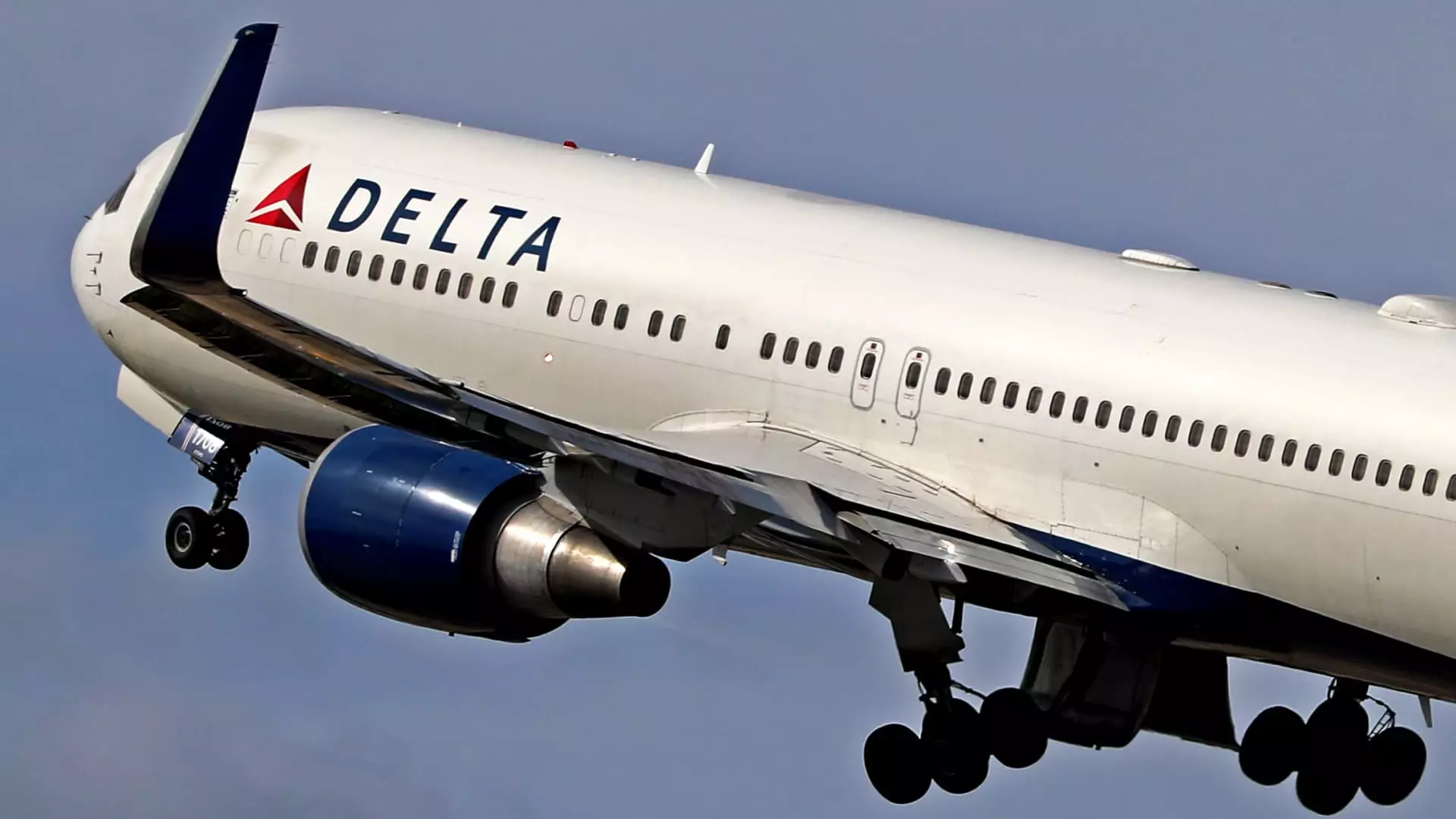As the airline sector finds itself embroiled in a significant downturn, the latest reports from Wall Street reveal an unsettling narrative that can no longer be ignored. On Tuesday, airline stocks faced another bleak day, with high-profile carriers like Delta Air Lines witnessing a drop of more than 3%. The crux of the issue appears to lie in consumer sentiment and the prospect of looming tariffs, which together create a perfect storm for the travel industry. Jefferies’ decision to downgrade Delta to a “hold” rating is telling; coupled with a halved price target, it raises alarms about the airline’s future and fortification amid a challenging landscape.
Consumer Confidence: A Hidden Culprit
One of the most disturbing trends emerging from the recent analysis is the marked decline in consumer confidence. The statistics speak volumes: while household spending on credit and debit cards overall has risen by 1.5% since last year, expenditure on airline tickets has plummeted by 7.2%. This discrepancy indicates a growing hesitation among consumers, who are now more cautious than ever about discretionary spending. The connection between dwindling consumer confidence and decreased travel bookings cannot be overstated. It reveals an unsettling truth: when confidence falters, so does the tradition of leisure travel, affecting the industry’s primary revenue driver.
Shifting Demographics of Travelers
Delta, despite these adverse conditions, asserts that a strategic pivot toward premium offerings such as first-class seats and lucrative credit partnerships with American Express provides a buffer against the storm. Yet, this strategy raises questions about the future of more price-sensitive travelers. As economic uncertainty persists, a broader reliance on affluent customers could alienate a significant segment of the market, which may lead to further long-term repercussions.
The downgrade of other major airlines, like American Airlines and Southwest, signals an overarching problem in the industry; it’s not merely a Delta issue but rather a systemic crisis affecting several players in the market. Jefferies’ assessment that United Airlines is still worthy of a “buy” rating may offer a glimmer of hope for investors, but it underscores the alarming reality that even the most stable operator is not immune to the prevailing threats.
Looming Tariffs: The Hidden Tax
Adding to the turbulence is the looming prospect of tariffs that could further impact travel costs. While they may seem like distant concerns, their potential for compressing consumer budgets should make every stakeholder in the industry wary. The airline sector’s struggle is not just a reflection of internal management or marketing strategies; it underscores the macroeconomic factors at play that amplify the chaos.
Analysts’ commentary on softening demand for domestic travel shines a spotlight on the core issue: it is not just about rising costs but also about the inability of airlines to inspire traveler confidence amid uncertainty. This troubling trend suggests that without effective management of both consumer perception and external pressures, the landscape for U.S. airlines may continue to be fraught with difficulties.
In sum, the downward spiral of airline stocks demonstrates a precarious balance between external economic factors and internal corporate strategies. While industry leaders may scramble to adapt, their challenges extend far beyond mere market fluctuations. This downturn should serve as a wake-up call for airlines to diversify and broaden their appeal while also recalibrating their aims amid shifting consumer expectations.

